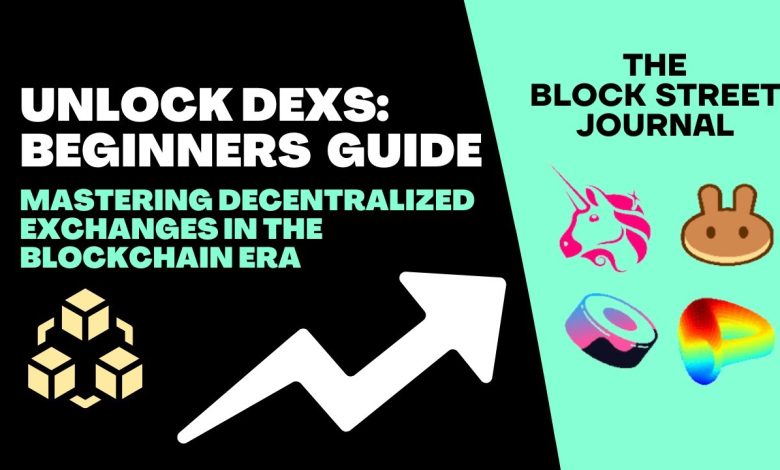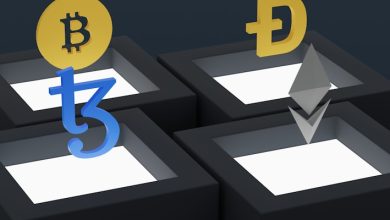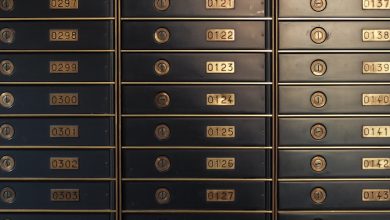How to Use Decentralized Exchanges: A Beginner’s Guide

- Understanding the Basics of Decentralized Exchanges
- Benefits of Using Decentralized Exchanges Over Centralized Ones
- Step-by-Step Guide to Trading on Decentralized Exchanges
- Tips for Ensuring Security and Privacy on Decentralized Exchanges
- Exploring the Different Types of Decentralized Exchanges
- Common Mistakes to Avoid When Using Decentralized Exchanges
Understanding the Basics of Decentralized Exchanges
Decentralized exchanges (DEX) are platforms that allow users to trade cryptocurrencies directly with one another without the need for a central authority to facilitate the transactions. Understanding the basics of decentralized exchanges is crucial for anyone looking to venture into the world of crypto trading.
One of the key features of DEX is that they operate on blockchain technology, which ensures transparency and security for all transactions. Unlike centralized exchanges, where users have to deposit their funds into the exchange’s wallet, DEX allows traders to retain control of their assets at all times. This eliminates the risk of hacks or theft that can occur on centralized platforms.
Another important aspect of decentralized exchanges is that they do not require users to create accounts or go through a lengthy verification process. This means that anyone can start trading on a DEX quickly and easily, without having to disclose personal information. This anonymity is a major draw for many users who value privacy and security in their transactions.
Furthermore, decentralized exchanges offer a wide range of trading pairs, allowing users to exchange various cryptocurrencies without having to convert them to a common base currency. This flexibility gives traders more options and opportunities to diversify their portfolios. Additionally, DEX typically have lower fees compared to centralized exchanges, making them a cost-effective option for frequent traders.
In conclusion, decentralized exchanges provide a secure, transparent, and user-friendly platform for trading cryptocurrencies. By understanding the basics of DEX, users can take advantage of the benefits they offer and participate in the growing crypto market with confidence.
Benefits of Using Decentralized Exchanges Over Centralized Ones
There are several benefits to using decentralized exchanges over centralized ones. One of the main advantages is the increased security that decentralized exchanges offer. Since decentralized exchanges do not hold users’ funds, they are less susceptible to hacking and theft. This provides users with greater peace of mind when trading cryptocurrencies.
Another benefit of decentralized exchanges is the increased privacy they offer. Centralized exchanges often require users to go through a lengthy verification process, which can compromise their privacy. Decentralized exchanges, on the other hand, allow users to trade without having to reveal their personal information.
Decentralized exchanges also offer greater control over funds. When using a centralized exchange, users must trust the exchange to hold their funds securely. With decentralized exchanges, users retain control of their private keys, giving them full control over their funds at all times.
Furthermore, decentralized exchanges are often more accessible to users around the world. Centralized exchanges may have restrictions based on location or require users to have a bank account. Decentralized exchanges, however, are typically open to anyone with an internet connection, making them more inclusive.
In conclusion, decentralized exchanges provide increased security, privacy, control, and accessibility compared to centralized exchanges. These benefits make decentralized exchanges an attractive option for those looking to trade cryptocurrencies in a safe and secure manner.
Step-by-Step Guide to Trading on Decentralized Exchanges
To start trading on decentralized exchanges, follow this step-by-step guide:
1. **Choose a Wallet**: The first step is to select a wallet that is compatible with decentralized exchanges. Popular options include MetaMask, Trust Wallet, and Ledger Nano S. Make sure to securely store your private keys.
2. **Fund Your Wallet**: Transfer cryptocurrency from your existing wallet or exchange to your chosen wallet. Ensure you have enough funds to cover trading fees and the amount you wish to trade.
3. **Connect to a Decentralized Exchange**: Access a decentralized exchange like Uniswap or SushiSwap through your wallet by connecting it to the exchange. This allows you to trade directly from your wallet.
4. **Select the Trading Pair**: Choose the cryptocurrency pair you want to trade. For example, if you want to trade Ethereum for DAI, select the ETH/DAI trading pair.
5. **Set the Amount and Price**: Enter the amount of cryptocurrency you want to trade and set the price at which you are willing to trade. You can also choose to trade at the market price.
6. **Approve the Transaction**: Before confirming the trade, you may need to approve the transaction using your wallet. This step is necessary to authorize the exchange to access your funds.
7. **Confirm the Trade**: Once you have approved the transaction, confirm the trade to execute it. The exchange will match your trade with another user or liquidity pool.
8. **Receive Your Tokens**: After the trade is completed, you will receive the tokens in your wallet. You can hold onto them, transfer them to another wallet, or trade them for other cryptocurrencies.
By following these steps, you can start trading on decentralized exchanges with ease. Remember to do thorough research and understand the risks involved in trading cryptocurrencies.
Tips for Ensuring Security and Privacy on Decentralized Exchanges
When using decentralized exchanges, it is crucial to prioritize security and privacy to protect your assets and personal information. Here are some tips to help ensure a safe trading experience:
- Choose a reputable decentralized exchange platform that has a track record of security and reliability.
- Enable two-factor authentication (2FA) to add an extra layer of security to your account.
- Use a hardware wallet to store your funds securely offline, reducing the risk of hacking.
- Avoid sharing sensitive information such as private keys or passwords with anyone.
- Regularly update your software and firmware to protect against potential vulnerabilities.
- Be cautious of phishing scams and only access decentralized exchanges through official websites or trusted links.
- Consider using a VPN to encrypt your internet connection and protect your privacy while trading.
- Monitor your accounts regularly for any suspicious activity and report any unauthorized transactions immediately.
By following these security and privacy tips, you can trade on decentralized exchanges with confidence and peace of mind, knowing that you have taken the necessary precautions to safeguard your assets and personal information.
Exploring the Different Types of Decentralized Exchanges
Decentralized exchanges come in various types, each offering unique features and benefits to users. One common type is the **automated market maker (AMM)**, which uses smart contracts to facilitate trades without the need for an order book. This type of exchange is popular for its **liquidity pools** and **low fees**. Another type is the **order book exchange**, which matches buyers and sellers based on their desired prices. These exchanges offer more control over trades but may have **higher fees**.
**Token swap exchanges** are another type of decentralized exchange that focuses on swapping one cryptocurrency for another. These exchanges are popular for their **simplicity** and **speed**. **Derivatives exchanges** allow users to trade **futures** and **options** contracts, providing opportunities for **hedging** and **speculation**. Lastly, **peer-to-peer exchanges** connect buyers and sellers directly, allowing for **privacy** and **flexibility** in trading.
By exploring the different types of decentralized exchanges, users can choose the platform that best suits their trading needs and preferences. Whether you prioritize **low fees**, **speed**, **privacy**, or **control**, there is a decentralized exchange out there for you. Take the time to research and understand the various types to make an informed decision on which exchange to use for your cryptocurrency trading activities.
Common Mistakes to Avoid When Using Decentralized Exchanges
When using decentralized exchanges, there are several common mistakes that beginners should avoid to ensure a smooth trading experience. Here are some key pitfalls to watch out for:
- Not securing your private keys: One of the most critical mistakes users make is not properly securing their private keys. Your private keys are essentially the keys to your funds, so it is crucial to keep them safe and never share them with anyone.
- Ignoring liquidity: Another mistake is ignoring liquidity when trading on decentralized exchanges. Low liquidity can result in slippage, which can lead to unfavorable prices for your trades. Always check the liquidity of the trading pairs you are interested in before making a trade.
- Using unfamiliar smart contracts: It is essential to be cautious when interacting with smart contracts on decentralized exchanges. Using unfamiliar or unaudited smart contracts can put your funds at risk. Stick to well-known projects and always do your research before engaging with a new smart contract.
- Not double-checking transaction details: Before confirming any transaction on a decentralized exchange, make sure to double-check all the details, including the recipient address and the amount you are sending. Once a transaction is confirmed, it is irreversible, so it is crucial to verify all the information before proceeding.
- Forgetting to consider gas fees: Gas fees on decentralized exchanges can vary depending on network congestion. Forgetting to consider gas fees can result in unexpectedly high transaction costs. Always check the current gas prices and factor them into your trading decisions.
By avoiding these common mistakes, you can navigate decentralized exchanges more effectively and minimize the risks associated with trading on these platforms. Remember to prioritize security, liquidity, and careful consideration of transaction details to make the most of your decentralized exchange experience.



